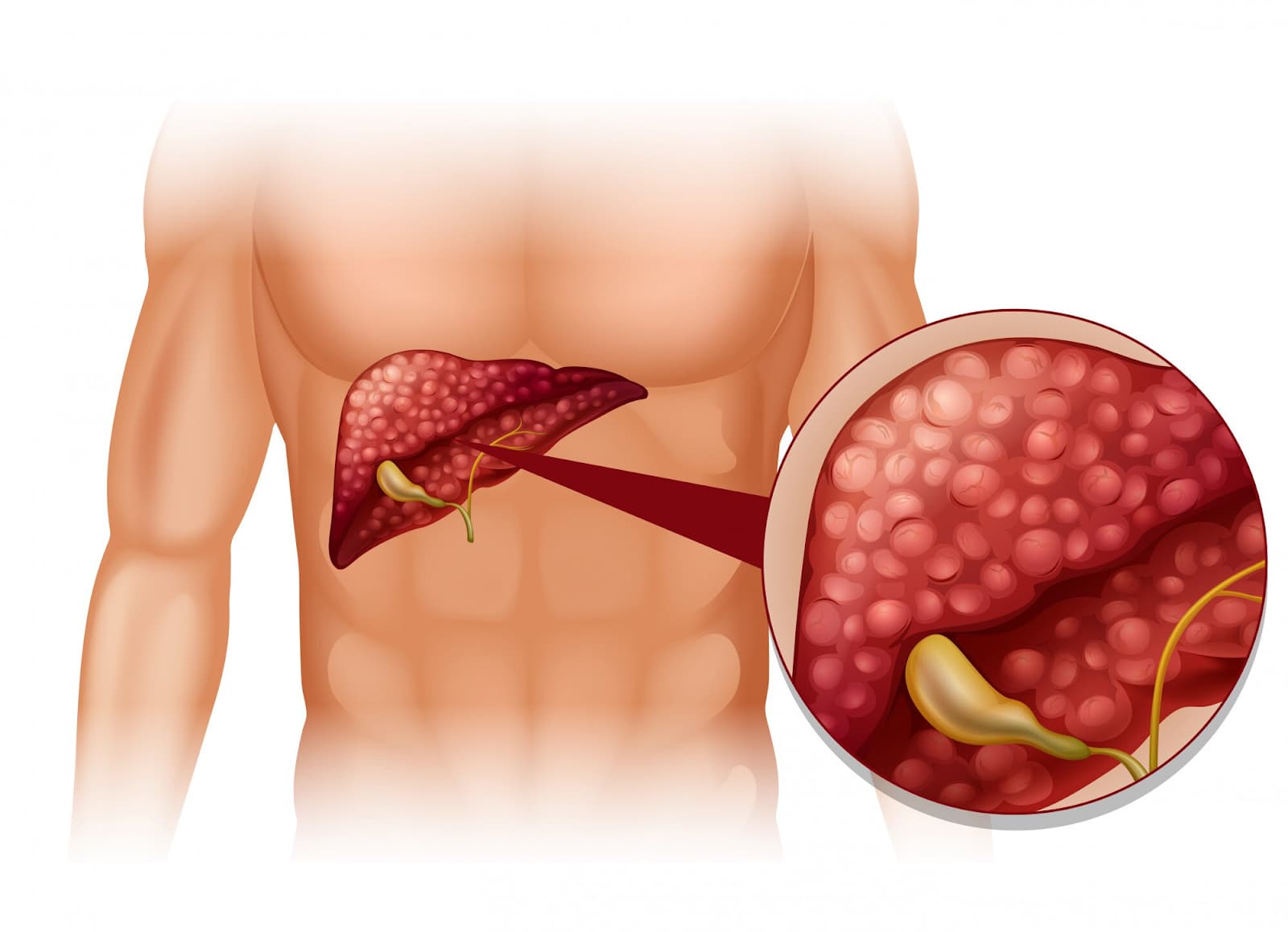
Everything You Need To Know About Cirrhosis
Liver cirrhosis stands as a formidable threat to human health, often referred to as the “liver killer” due to its severe impact on this vital organ. From processing nutrients to detoxifying the body, the liver plays a pivotal role in maintaining our overall well-being. However, when subjected to prolonged exposure to harmful substances and unhealthy practices, the liver’s resilience can be compromised, leading to the development of cirrhosis. This condition marks a critical juncture where the liver’s ability to function is severely impaired, posing significant risks to an individual’s life expectancy. In this comprehensive guide, we delve into the intricacies of liver cirrhosis, exploring its stages, causes, symptoms, diagnosis, treatment options, and the crucial role of organizations like AILBS India in managing this complex condition.
What exactly is Liver Cirrhosis?
The Process of Liver Damage
The progression of liver damage involves a series of stages, with fibrosis representing an intermediate step before culminating in cirrhosis. Fibrosis occurs when the liver attempts to regenerate damaged cells, resulting in the formation of extensive scar tissue. Cirrhosis, the advanced stage of fibrosis, signifies a critical point where the majority of healthy liver tissue is replaced by non-functional scar tissue. At this stage, the liver’s capacity to perform essential functions is severely compromised, marking a terminal phase in the spectrum of liver diseases.
Impact on Liver Function
During cirrhosis, the liver undergoes significant structural changes, leading to impaired blood flow, reduced detoxification capabilities, and compromised nutrient processing. As the liver hardens and loses functionality, individuals may experience a range of debilitating symptoms, highlighting the urgent need for intervention and management strategies to mitigate further complications.
Prognosis and Life Expectancy
The prognosis for individuals with cirrhosis varies depending on various factors such as the underlying cause, the extent of liver damage, and the presence of complications. Life expectancy in cirrhosis patients is a critical concern, with timely diagnosis, appropriate treatment, and lifestyle modifications playing key roles in improving outcomes and prolonging survival rates.
Liver Cirrhosis Stages
Compensated Cirrhosis: Asymptomatic Phase
In the early stages of cirrhosis, known as compensated cirrhosis, individuals may not exhibit noticeable symptoms despite underlying liver damage. This phase underscores the importance of regular monitoring and medical intervention to prevent disease progression and complications.
Decompensated Cirrhosis: Symptomatic Manifestations
Decompensated cirrhosis represents an advanced stage characterized by the onset of symptoms such as jaundice, ascites, hepatic encephalopathy, and variceal bleeding. This critical phase necessitates immediate medical attention and comprehensive management to address the escalating challenges posed by deteriorating liver function.

The Primary Causes of Liver Cirrhosis: Alcohol and Viral Infections
Liver cirrhosis can arise from various etiological factors, with chronic alcohol consumption and viral infections standing out as primary contributors to liver damage. Excessive alcohol intake over an extended period can lead to alcoholic liver disease, progressively advancing to cirrhosis if left unchecked. Similarly, viral infections such as hepatitis B and C pose a significant risk, triggering inflammation and scarring within the liver, ultimately culminating in cirrhotic changes.
Comparison of Alcohol-Related and Viral Hepatitis-Induced Cirrhosis
| Factors | Alcohol-Related Cirrhosis | Viral Hepatitis-Induced Cirrhosis |
|---|---|---|
| Etiology | Chronic alcohol consumption | Hepatitis B and C infections |
| Progression to Cirrhosis | Gradual | Variable, influenced by viral load |
| Treatment Options | Abstinence, supportive care | Antiviral therapy, immunomodulators |
Liver Fibrosis Symptoms
Liver fibrosis, a precursor to cirrhosis, may manifest with subtle symptoms that gradually intensify as the disease progresses. Common signs of liver fibrosis include fatigue, abdominal discomfort, unexplained weight loss, and mild jaundice. These early indicators underscore the importance of timely medical evaluation and diagnostic tests to assess liver health and initiate appropriate interventions.
Common Liver Fibrosis Symptoms:
- Fatigue;
- Abdominal Pain;
- Unexplained Weight Loss;
- Mild Jaundice.
What is the Diagnosis of Liver Cirrhosis?
Diagnosing liver cirrhosis involves a comprehensive assessment encompassing medical history review, physical examinations, imaging studies, and laboratory tests. Key diagnostic modalities include ultrasound imaging, CT scans, MRI scans, liver function tests, and liver biopsy. These diagnostic tools aid in evaluating the extent of liver damage, identifying underlying causes, and formulating tailored treatment plans to address the specific needs of each patient.
Importance of Early Detection
Early detection of liver cirrhosis is paramount in enhancing treatment outcomes and preserving liver function. Regular screenings, especially for individuals at high risk of liver disease, enable healthcare providers to intervene promptly, implement preventive measures, and monitor disease progression effectively.
Monitoring Disease Progression
Continuous monitoring of liver cirrhosis through routine follow-up visits, imaging studies, and laboratory tests allows healthcare professionals to track disease progression, assess treatment efficacy, and adjust therapeutic strategies as needed. This proactive approach plays a crucial role in optimizing patient care and improving long-term outcomes.
Consult An Expert Immediately
Upon experiencing symptoms suggestive of liver cirrhosis or receiving a confirmed diagnosis, seeking prompt medical consultation is imperative. Consulting a hepatologist or gastroenterologist specializing in liver diseases ensures comprehensive evaluation, personalized treatment planning, and ongoing management to address the complex challenges associated with cirrhosis. Timely intervention significantly impacts disease prognosis, quality of life, and overall survival rates, underscoring the critical role of expert medical guidance in navigating the complexities of liver cirrhosis.

Liver Transplant: A Way Back From Cirrhosis
Liver transplantation emerges as a definitive treatment option for individuals with end-stage liver disease, offering a chance for renewed health and improved life expectancy. This surgical procedure involves replacing a diseased liver with a healthy liver from a deceased or living donor, providing a viable solution for patients with advanced cirrhosis who have exhausted conventional treatment options. Liver transplant recipients require lifelong medical supervision, adherence to immunosuppressive medications, and diligent post-operative care to ensure optimal outcomes and long-term graft survival.
Eligibility Criteria for Liver Transplantation
Candidates for liver transplantation undergo rigorous evaluation to determine their suitability for the procedure. Factors such as overall health status, severity of liver disease, absence of contraindications, and willingness to comply with post-transplant care protocols influence candidacy decisions. Multidisciplinary transplant teams collaborate to assess each patient comprehensively, ensuring that those most likely to benefit from transplantation receive timely access to this life-saving intervention.
Post-Transplant Care and Follow-Up
Following liver transplantation, recipients enter a phase of intensive post-operative care, including close monitoring for complications, immunosuppressive therapy management, and rehabilitation support. Regular follow-up visits, diagnostic assessments, and lifestyle modifications are integral components of post-transplant care, aimed at promoting graft function, preventing rejection, and optimizing long-term outcomes for transplant recipients.
Why Choose AILBS India for Liver Transplant?
AILBS India stands at the forefront of liver transplant excellence, offering world-class medical expertise, state-of-the-art facilities, and compassionate care to patients battling liver diseases. With a multidisciplinary team of renowned hepatologists, transplant surgeons, nurses, and support staff, AILBS India delivers comprehensive liver care services, including pre-transplant evaluations, transplant surgeries, post-operative care, and long-term management. The center’s commitment to innovation, research, and patient-centric care ensures that individuals facing liver cirrhosis receive personalized treatment solutions tailored to their unique needs, fostering hope, healing, and restored health.
Conclusion
In conclusion, liver cirrhosis represents a critical health challenge with profound implications for life expectancy and quality of life. Understanding the complexities of this condition, from its pathophysiology to diagnostic approaches and treatment modalities, is essential in empowering individuals to make informed decisions about their liver health. By recognizing the early signs of liver disease, adopting healthy lifestyle practices, seeking timely medical intervention, and accessing specialized care from reputable institutions like AILBS India, patients can navigate the complexities of cirrhosis with confidence and resilience. Through collaborative efforts between healthcare providers, patients, and support systems, the journey toward managing liver cirrhosis becomes a pathway to renewed vitality, enhanced well-being, and a brighter future ahead.

